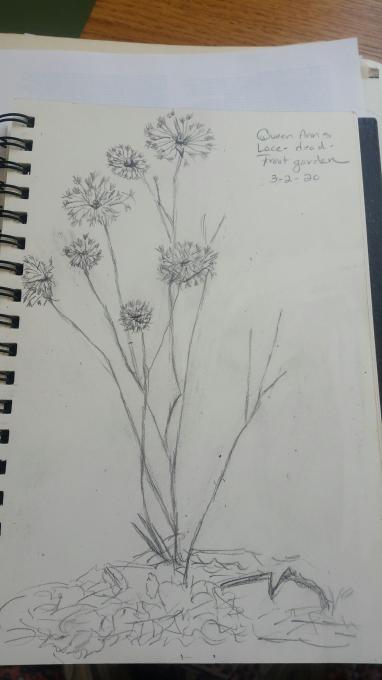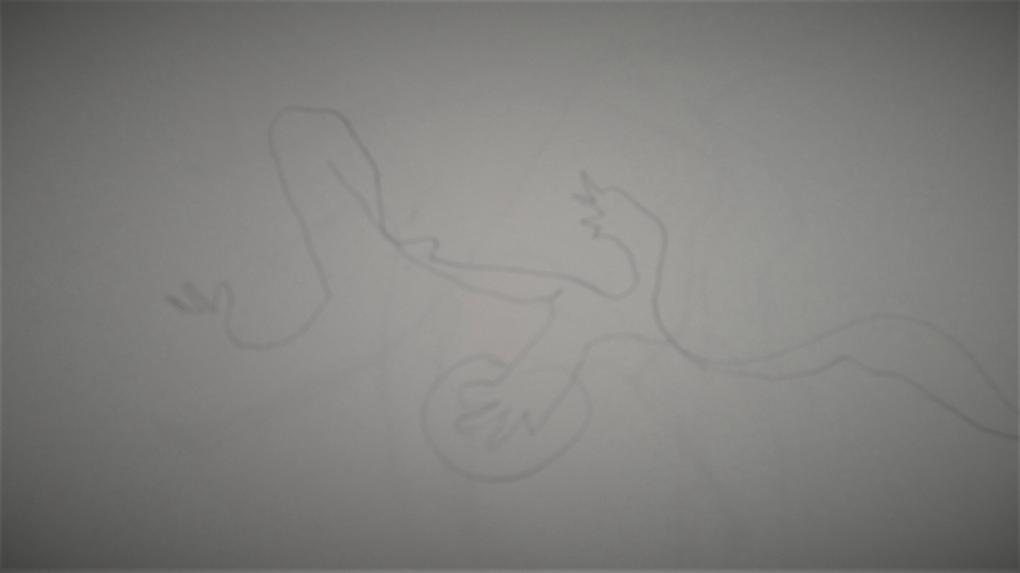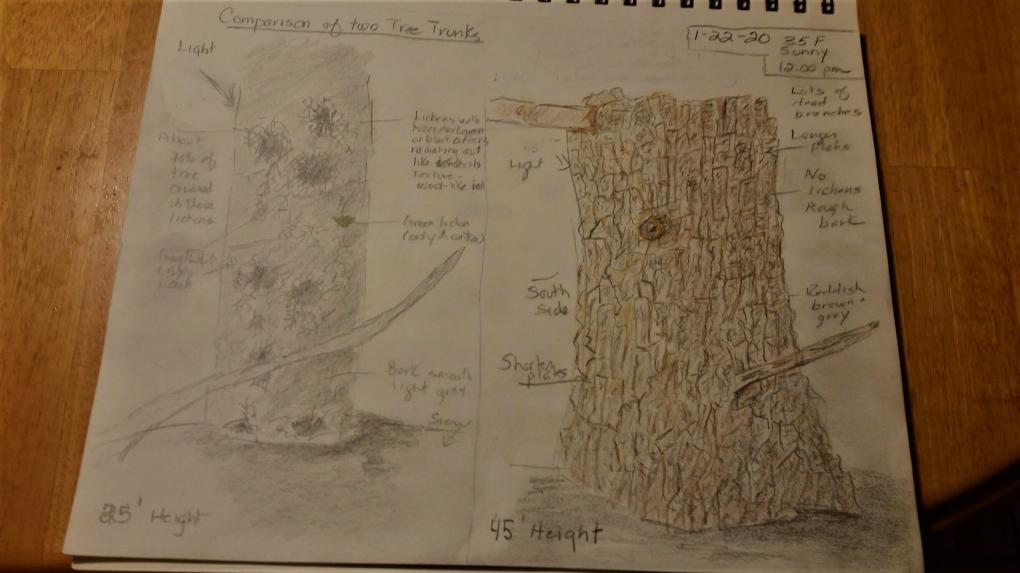Gail
Forum Replies Created
Viewing 10 posts - 1 through 10 (of 10 total)
-
GailParticipantI did not think about placement of the feeders and how it makes it more dangerous for birds. Fortunately, our feeders are far away or very close to the house. I have been working on making my property optimal bird and wildlife habitat since I moved in 7 years ago. I have included a diversity of native wildflowers, berry shrubs, vines, and pruned our apple trees to make them healthier. We live on 5 acres of which 4 acres are heavily forested with hemlock, white pine, birches, beeches, aspens, maples and oaks. So we have lots of tree seeds and nuts for the birds. I have goldenrod growing around the edge of the forest and a large pollinator garden. I grow herbs and vegetables -and the bees/insects love thyme flowers. We have a small pool, but I need to create running water and a place for the birds to get in and bathe. I liked the idea of adding a small dish-like container with water on the edge of my pool so the birds have a place to bathe and drink. The pool is too deep. Otherwise, I think we are creating good habitat for the birds-lots of leaf litter and brush piles throughout the gardens and woods.in reply to: Keys to Gardening for Birds #868282
-
GailParticipantWe live in Wilton, New Hampshire and have 5 acres of forest and gardens. We abut several hundred acres of conserved mixed forest and fields which adds to the habitat quality of our property. This is our third home and we are long time birders and conservation activists so have always focused on improving our properties to optimize habitat for birds and wildlife. Our last home was Certified Habitat for Wildlife by National Wildlife Federation. When we moved into our home in Wilton, we had to uncover gardens and prune old apple trees. We also cut some trees and shrubs to make pollinator gardens. I raked and then dug into the soil to open it up an area for seeding native wildflowers. Goldenrod and asters germinated and added to the Purple Coneflowers, daisies, clovers, phlox,lupine, and other wildflowers. We created a small pool which is enjoyed by the birds, frogs, and even an American toad which laid eggs in it and we had toad tadpoles. Wood and brush piles are scattered around our forest and we added native shrubs/vines that offer fruit like dogwoods, virginia creeper, serviceberry, raspberries and high-bush cranberries. At last count, we have had 110 birds migrate, breed, visit or live on our property over the past 7 years.in reply to: Joys of Naturescaping #867666
-
GailParticipantMy favorite nature writer is David Carroll-his books are a reverent and spiritual look at New England's turtles, wetlands and riparian habitats. His intimacy with the Blandings, Spotted and Wood turtles that he follows from Spring through Fall in Webster, NH is inspiring and fascinating. He knows each of the turtles by their carapace and knotches he has made on their tales. His deep love for the swamps, wet meadows, marshes and streams that he knows through many years of walking through them is an insight into wetland ecology so few of us have experienced. Bernd Heinrich is my other favorite nature writer. His book-Trees in My Forest- is an amazing forest ecology and natural history book. He writes about the forest on this property in Maine and its history and ecological changes through the years before and after he acquired the land. I learned so much about tree morphology, physiology and anatomy, and chemistry. I write nature prose and poetry. I have for over 20 years now. Being in the New England woods and mountains, watching birds and wildlife, observing plants and trees is a spiritual and inspiring experience for me. It makes it so easy for me to write and reflect on the amazing beauty and diversity of the Earth.in reply to: The Power of Reflection #666871
-
GailParticipantI found using the measuring proportion technique very effective and gives me a great tool to make sure my illustration are more accurate and proportionally correct.
 in reply to: Getting the Proportions Right #666449
in reply to: Getting the Proportions Right #666449 -
GailParticipantThis was a difficult drawing exercise for me. I focused only on creating shapes and negative spacing between them. However, I tried to scale up the drawing to use up all of my paper and that caused problems with connecting the wings and other body parts. Actual size vs illustration is challenging and makes me realize that I am more interested in capturing the form and features and not have to make them to actual size.
 in reply to: Drawing What You See – Upside Down Drawing #666278
in reply to: Drawing What You See – Upside Down Drawing #666278 -
GailParticipantI did not find this technique helpful. I do not think it enhanced my observation skills . I was more concerned about getting the shapes right instead of focusing on the subject. I also felt very disconnected with where I was on the page and how to connect the lines so the body or plant shape would be whole instead of in separate pieces. I feel that I am able to concentrate on what I am observing in the natural world so did not find this enhanced my connection.

 in reply to: Focusing on Your Subject – Blind Contour Drawing #660248
in reply to: Focusing on Your Subject – Blind Contour Drawing #660248 -
GailParticipantI really enjoyed this journal practice. I spent almost an hour observing and illustrating the bark of an American beech and White Pine bark. The bark was strikingly different. The beech bark had lots of lichens and I noticed that the majority of its lichens were black, spider-web like strands that branched out like club moss in different directions. There were more lichens on the north side of the tree due to the moisture and coolness on that side. The white pine had very thick, plate-like strips of bark that were very rough and had no lichens on it. It was located next to the beech so even though they were in the same location, there were no lichens on it. Very interesting to look so closely at the bark of two trees and to see the amazing colors and shapes. I like the idea of having more illustrations with some observations rather than writing. I will probably continue my nature poetry and illustrations as part of my journal work as it brings in a spiritual aspect that does not occur when being more scientific about my journal and observations.
 in reply to: The Power of Comparison #660022
in reply to: The Power of Comparison #660022 -
GailParticipantI observed out my kitchen window this morning as it was much too cold to sit outside. It was a balmy 9F with a strong wind. I am continually amazed at the resourcefulness and resilience of birds like Chickadees, Titmice, Juncos and Sparrows during these arctic blasts. They are so small and their down and contour feathers do not seem enough to keep them from freezing on days like today. Yet they continue to fly, grab seeds, look around tree trunks and wood piles for overwintering insects. A few young male turkeys arrived this morning and I had questions about why-we have not seen any turkeys since early summer 2019.in reply to: Noticing Themes in Nature #659341
-
GailParticipant
 The photo makes it easier to draw more details of the Yellow Warbler then being in the field getting a quick look at the bird. That is why it is good to get a photo of the bird or object when you are outside and then complete the drawing afterwards. I found it challenging to draw the details of the wings-primaries, secondaries and tertials. The body proportions-head, bill, and back and belly were challenging too. It was easier to revise and adjust the sizing and fan-like shape of the wings with a photo. I also noticed how the wings are aligned and the tarsus and toes grasping onto the branch was much more apparent. If I was doing a nature journal and saw the Yellow Warbler, I would miss these details. in reply to: Jump Right in! #658297
The photo makes it easier to draw more details of the Yellow Warbler then being in the field getting a quick look at the bird. That is why it is good to get a photo of the bird or object when you are outside and then complete the drawing afterwards. I found it challenging to draw the details of the wings-primaries, secondaries and tertials. The body proportions-head, bill, and back and belly were challenging too. It was easier to revise and adjust the sizing and fan-like shape of the wings with a photo. I also noticed how the wings are aligned and the tarsus and toes grasping onto the branch was much more apparent. If I was doing a nature journal and saw the Yellow Warbler, I would miss these details. in reply to: Jump Right in! #658297 -
GailParticipantI appreciated the different styles of each journal and has motivated me to add a new dimension to my nature journaling. My nature journal is usually inspired poems or prose based on my experience in the natural world. I usually write a poem and then do a drawing. I have focused mostly on trees, mushrooms, acorns, the forest floor-leaves, pine needles and twigs and a few landscape drawings. I have taken some nature art lessons so I understand the basics of drawing and illustration. I like the idea of adding some scientific observations mixed in with illustrations. I was just out in the woods doing some animal tracking and came across moose tracks. I tried to draw them, but they lack depth so need to learn some techniques to make tracks look three dimensional. I spend so much time outdoors and have a deep spiritual connection to the natural world so love spending more time observing nature when I draw- it really makes me appreciate the incredible beauty, textures and richness of where I am.in reply to: Style Your Journal Your Way #657957
Viewing 10 posts - 1 through 10 (of 10 total)






 The photo makes it easier to draw more details of the Yellow Warbler then being in the field getting a quick look at the bird. That is why it is good to get a photo of the bird or object when you are outside and then complete the drawing afterwards. I found it challenging to draw the details of the wings-primaries, secondaries and tertials. The body proportions-head, bill, and back and belly were challenging too. It was easier to revise and adjust the sizing and fan-like shape of the wings with a photo. I also noticed how the wings are aligned and the tarsus and toes grasping onto the branch was much more apparent. If I was doing a nature journal and saw the Yellow Warbler, I would miss these details.
The photo makes it easier to draw more details of the Yellow Warbler then being in the field getting a quick look at the bird. That is why it is good to get a photo of the bird or object when you are outside and then complete the drawing afterwards. I found it challenging to draw the details of the wings-primaries, secondaries and tertials. The body proportions-head, bill, and back and belly were challenging too. It was easier to revise and adjust the sizing and fan-like shape of the wings with a photo. I also noticed how the wings are aligned and the tarsus and toes grasping onto the branch was much more apparent. If I was doing a nature journal and saw the Yellow Warbler, I would miss these details.